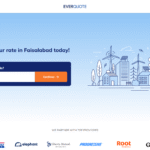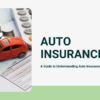Auto insurance is essential for vehicle owners to protect themselves, others, and their vehicles in the event of an accident. Understanding the different types of coverage available can help you make informed decisions about the policy that’s right for you. Here are eight key types of auto insurance coverage you should be aware of:
1. Liability Coverage
Liability coverage is one of the most basic and essential types of car insurance. It protects you if you are found at fault in an accident that causes injury or property damage to another person. It includes:
- Bodily Injury Liability: Covers medical expenses, lost wages, and legal fees for the other party if you are at fault.
- Property Damage Liability: Covers repairs or replacement of the other party’s property, including vehicles, fences, or buildings.
2. Collision Coverage
Collision insurance covers damage to your own vehicle resulting from a collision, regardless of who is at fault. Whether you hit another car, a tree, or a guardrail, this coverage ensures that your vehicle will be repaired or replaced.
3. Comprehensive Coverage
Comprehensive coverage protects your vehicle from damage not caused by a collision, such as theft, vandalism, weather-related incidents (like hail or floods), and animal collisions. This is particularly useful for protecting your car from non-driving-related incidents.
4. Personal Injury Protection (PIP)
Personal Injury Protection (PIP), also known as “no-fault” insurance, covers medical expenses for you and your passengers if you’re injured in an accident, regardless of who is at fault. It can also cover lost wages and other related costs, making it crucial for those who want extra peace of mind for medical needs.
5. Uninsured/Underinsured Motorist Coverage
This coverage protects you if you’re involved in an accident with a driver who doesn’t have insurance or has insufficient insurance to cover the damages. In some states, this coverage is mandatory, while in others, it’s optional.
6. Roadside Assistance
Roadside assistance coverage provides help if you break down or experience other vehicle problems while on the road. This can include towing, tire changes, battery jumps, lock-out assistance, and fuel delivery.
7. Rental Reimbursement
If your car is being repaired after a covered accident, rental reimbursement coverage helps cover the cost of renting a car while your vehicle is out of commission. This can be a lifesaver for individuals who depend on their cars for daily transportation.
8. Gap Insurance
Gap insurance is beneficial for drivers who owe more on their car loan than the car is worth. In the event of a total loss, gap insurance covers the difference between the market value of the car and the amount you owe on your loan or lease, ensuring you don’t end up paying for a car you no longer have.
Conclusion
Auto insurance is a critical aspect of responsible vehicle ownership. With the right coverage, you can protect yourself, your passengers, and your vehicle from the unpredictable nature of the road. Make sure to review your policy regularly and consider which types of coverage best suit your needs.
















